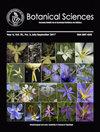Ethnobotanical culture of geophytes in Sakarya province, Turkey
IF 0.7
4区 生物学
Q3 PLANT SCIENCES
引用次数: 0
Abstract
Background: Limited number of studies have been conducted to determine the ethnobotanical uses of geophytes and to scientifically document traditional knowledge associated with them. Questions: What is the ethnobotanical usage culture of geophytes in Sakarya province? Studied species: Geophytes. Study site and dates: Sakarya, Turkey; 2017 to 2020. Methods: Information in the local community was obtained through face to face or collective interviews. In addition, cultural importance index (CII) and the informant consensus factor (ICF) values were calculated. Results: In this study, the knowledge of the local public about 115 geophytes (107 natural and eight cultivated) belonging to 26 families was revealed. The most common families are Asparagaceae (23 taxa), Iridaceae (20 taxa) and Amaryllidaceae (14 taxa). The most common genera are Crocus (12 taxa), Orchis (7 taxa) and Allium (6 taxa). Out of a total of 115 taxa, 226 uses are reported, including 128 folk remedies, 47 ornamental plants, 48 food and three the other uses. The most widely used plant according to cultural importance index is Leucojum aestivum (Gölsoğanı, CII: 2.57). Conclusion: Our interviews revealed that the geophytes in the study area are still widely used by people in their daily lives for medicinal, food and floricultural purposes. In addition, the ethnobotanical uses of Crocus speciosus subsp. sakariensis, Crocus keltepensis, Fritillaria bithynica and Muscari pamiryigidii are reported for the first time in Turkey.土耳其萨卡里亚省地植物的民族植物学文化
背景:为确定地质植物的民族植物学用途并科学地记录与之相关的传统知识,进行了数量有限的研究。问题:萨卡里亚省地质植物的民族植物学使用文化是什么?研究物种:地质植物。研究地点和日期:土耳其萨卡里亚;2017年至2020年。方法:通过面对面或集体访谈获得当地社区的信息。此外,还计算了文化重要性指数(CII)和信息者一致性因子(ICF)值。结果:本研究揭示了当地公众对26科115种植物(107种为天然植物,8种为栽培植物)的了解。最常见的科是天门冬科(23个分类群)、鸢尾科(20个分类群,)和石蒜科(14个分类群。最常见的属是Crocus属(12个分类群)、Orchis属(7个分类群。在总共115个分类群中,报告了226种用途,包括128种偏方、47种观赏植物、48种食物和3种其他用途。根据文化重要性指数,使用最广泛的植物是Leucojum aestivum(Gölsoğanı,CII:2.57)。此外,还介绍了番红花亚种的民族植物学用途。土耳其首次报道了萨卡里氏菌、克氏鳄、贝母和帕氏蝇。
本文章由计算机程序翻译,如有差异,请以英文原文为准。
求助全文
约1分钟内获得全文
求助全文
来源期刊

Botanical Sciences
Agricultural and Biological Sciences-Plant Science
CiteScore
1.90
自引率
21.40%
发文量
71
审稿时长
16 weeks
期刊介绍:
Botanical Sciences welcomes contributions that present original, previously unpublished results in Botany, including disciplines such as ecology and evolution, structure and function, systematics and taxonomy, in addition to other areas related to the study of plants. Research reviews are also accepted if they summarize recent advances in a subject, discipline, area, or developmental trend of botany; these should include an analytical, critical, and interpretative approach to a specific topic. Acceptance for reviews will be evaluated first by the Review Editor. Opinion Notes and Book Reviews are also published as long as a relevant contribution in the study of Botany is explained and supported.
 求助内容:
求助内容: 应助结果提醒方式:
应助结果提醒方式:


